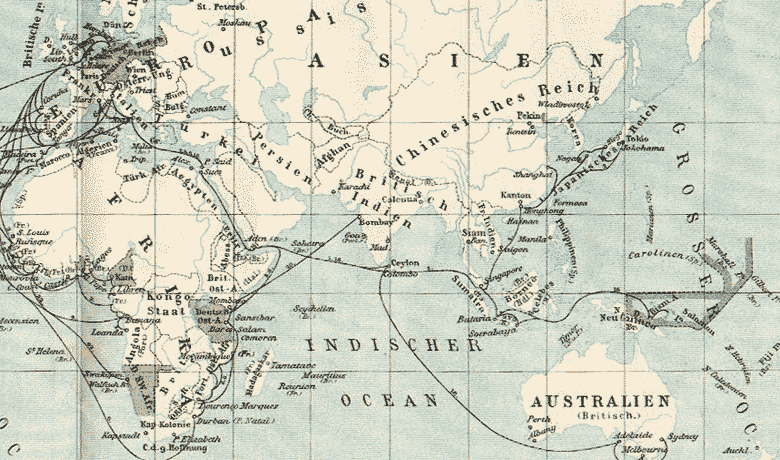Historical Background
German Colonies were the overseas possessions of the German empire from 1884 to 1918 and are often also known as the German Protected Territories. Agitation for the acquisition of colonies was conducted by the “Deutscher Kolonialverein” (Society for German Colonies) founded in 1882, and since 1887 by the Deutsche Kolonialgesellschaft (German Colonial Company) to which the former gave birth. Otto von Bismarck, at first an opponent of the colonial movement, from 1884 did his best to advance the efforts directed towards their possession. Overseas lands were to enliven trade, create space for emigrants and become sources of raw materials. Enlargement of the Empire was not an aim. The overseas territories were to start with administered by private companies, but by the end of the 19th century the state had taken over these responsibilities.
German interests were originally primarily concerned with Africa. German South West Africa, today Namibia, became a German colony in 1884 (until 1915). Togo, today split between Togo and Ghana and Cameroon were also declared Protected Territories in1884 (until 1914). The colony of German East Africa was founded in 1885 on territories now part of Tanzania, Ruanda and Burundi; it continued until 1918. The German Empire also acquired colonies in the Pacific area. In 1885 German New Guinea in the northeast of the island of that name, subsequently called Kaiser-Wilhelms-Land as well as the Bismarck-Archipelago and the Marshall Islands. Nauru followed in 1888 and in 1899 the Marianas, Carolines, Palau-Island and part of the island of Samoa . In 1898 Kiaochow was leased from China for 99 years. After World War I Germany was forced by the Treaty of Versailles to cede all its colonies. They became Mandated Territories of the League of Nations; de facto they became possessions of the countries exercising these mandates.

